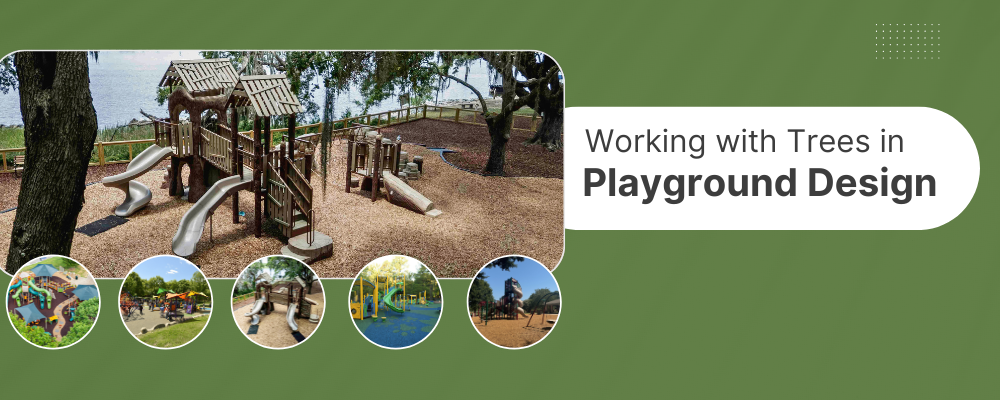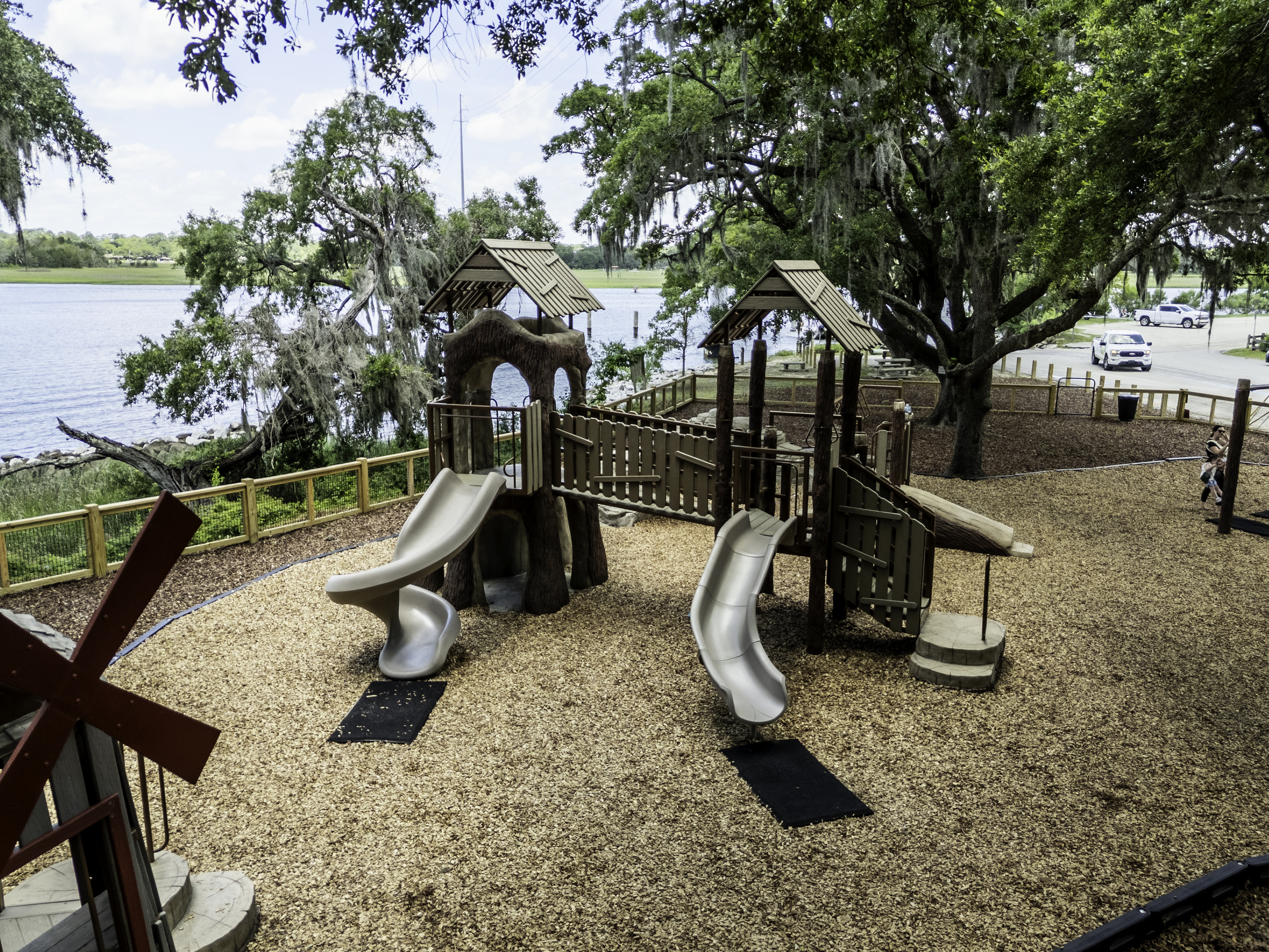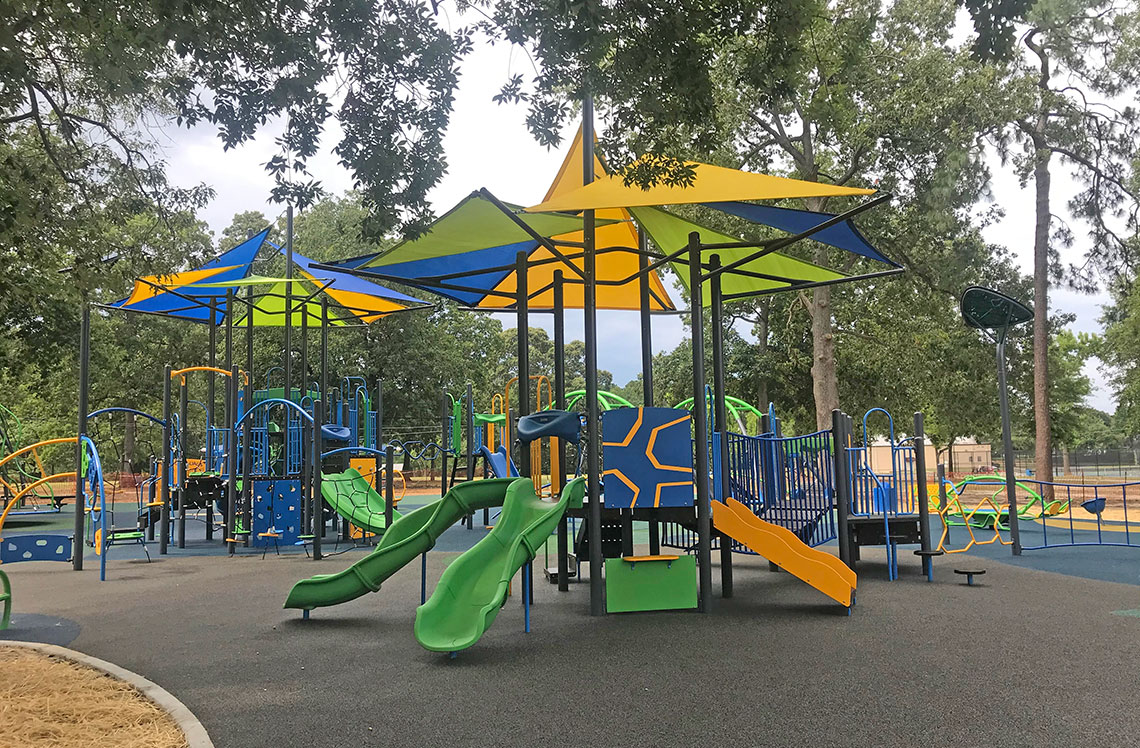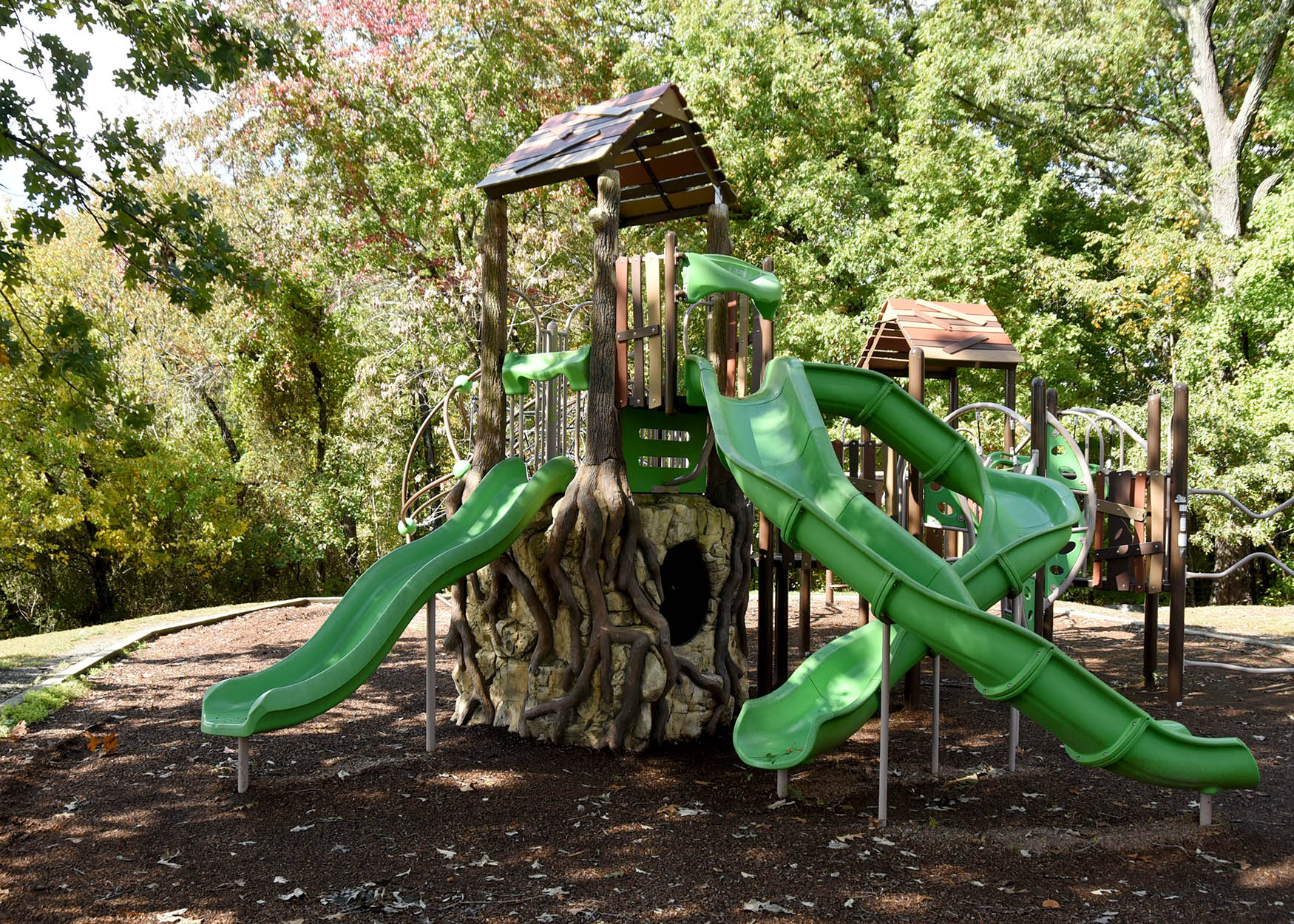
Trees and playgrounds seem like natural partners—until you're dealing with surface roots buckling your paths or wondering about liability when that big oak drops a branch. Here's how to keep mature trees while meeting safety standards.
Start with the Right Assessment
Before you design around that 60-year-old oak, get an arborist involved. The USDA Forest Service's risk management guide gives you a defensible framework: inventory your trees, rate their risk level, and document everything. This is your liability protection.
The International Society of Arboriculture's assessment form is what most certified arborists use. It walks through occupancy patterns (how many kids play under this tree?), likelihood of failure (are there dead branches?), and inspection intervals. Keep these forms on file—they show you made informed decisions based on professional standards.

Protect Roots During Construction
Most tree roots extend way beyond the drip line—sometimes 2-3 times the crown width. Consider fencing off a protection zone 15 - 18 feet from each trunk. No equipment staging, no material storage, no foot traffic.
The Minnesota Stormwater Manual's construction guidelines spell out exactly what works: 12 inches of wood chips for high traffic areas, air spading instead of trenching near roots, and keeping grade changes minimal. One compaction event from heavy equipment can damage roots enough to kill a tree three years later.

Design Surfaces That Work with Roots
When roots meet playground surfaces, you've got options beyond cutting roots or removing trees. Here are several approaches that work:
Meandering paths: Curve your accessible routes around major roots instead of cutting straight through. Yes, it adds square footage, but you keep the shade.
Bridged sections: Build small decks over root zones. Consider a boardwalk section that floats over the roots of an important oak.
Flexible surfaces: Rubber panels that can be lifted and reset as roots grow. This makes maintenance easier over time.
Permeable materials: Poured-in-place (PIP) rubber lets water and air reach roots while providing stable surfaces. These materials need regular cleaning to stay permeable.

Action Items
1.) Schedule risk assessments while leaves are still on. Dead branches are easier to spot, and you'll have winter to address problems before spring's heavy use.
2.) Map your shade coverage. Take photos at 10 AM, noon, and 2 PM. Where are the gaps? Where do kids cluster on hot days? This tells you where supplemental shade makes the biggest difference.
3.) Budget for protection. If you're planning 2026 projects near existing trees, add 10-15% for root protection, specialized equipment, and arborist oversight.
Need help planning shade coverage that works with your existing trees? We can overlay shade studies on your site plans to show exactly where structures would provide the most benefit. Reply with your site details and we'll get you started.